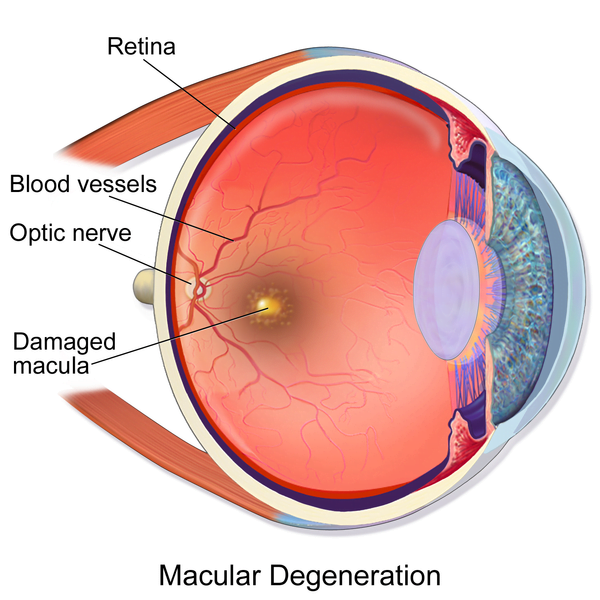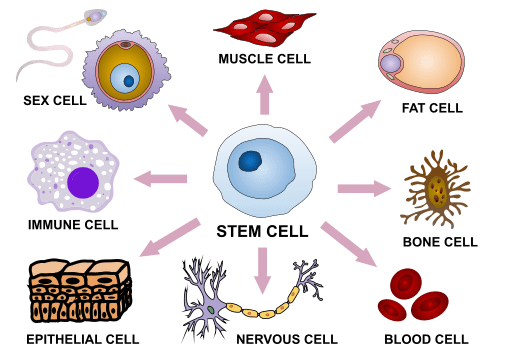Overview | Existing Treatments | New Treatments | Assistive Technology
Treatment for Macular Degeneration
Macular degeneration is an eye problem that can cause severe, permanent vision loss. In fact, macular degeneration is the leading cause of blindness in people over the age of 60. Medical and surgical treatments exist for some types of macular degeneration but not for other types. Treatment depends largely on the type of macular degeneration and its severity.

eSight electronic eyewear enhances vision for people living with central vision loss, legal blindness, blind spots and more. Try eSight today!
Macular Degeneration Overview
Macular degeneration affects the macula, which is the part of the eye responsible for clear central vision used to read, drive a car, and see faces. The macula sits at the center of the retina, which is a thin layer of tissue lining the inside of the eye.
Light carries on it visual information about the world. The retina absorbs light as it enters the eye, and converts the information into electrical impulses. The information then travels through the optic nerve to the brain, which translates the impulses into the images we see. Macular degeneration is a condition in which the macula degenerates, or breaks down. As the macula degenerates, it loses its ability to convert the light into impulses.
Macular degeneration causes blurred, and eventually loss of vision, in the center of the visual field. While it does not cause total vision loss, the loss of central vision associated with macular degeneration can interfere with nearly all activities of daily living, and can prevent someone from living independently. Fortunately, treatment for macular degeneration may be available, depending on whether macular degeneration is “dry” or “wet.”

Dry vs Wet Macular Degeneration
Dry macular degeneration is a condition characterized by thinning and eventual breakdown of the macula. The condition typically develops after tiny yellow deposits, known as drusen, develop under the retina. The presence of drusen does not cause dry macular degeneration, but macular degeneration often develops after the drusen grows in size and numbers.
Dry macular degeneration may develop in one eye then affect both eyes. It is a progressive condition, which means it worsens with time. Dry macular degeneration is more common than wet macular degeneration, which is a condition in which blood vessels leak blood and other fluids into the macula.

65% of people with macular degeneration who try eSight experience enhanced vision. Speak to an expert eSight advisor to learn more.
What is the Best Treatment for Macular Degeneration?
Patients often ask, “What is the best treatment for macular degeneration?”
The answer is: It depends largely on the type of macular degeneration and the severity of damage it has caused to the macula.
Treatment for dry macular degeneration
There is currently no treatment for dry AMD, although nutritional supplements may slow its progression. Macular degeneration vitamins include a mix of specific vitamins and minerals, including:
- Vitamin C (500 mg)
- Vitamin E (400 IU)
- Zeaxanthin (2 mg)
- Lutein (10 mg)
- Copper (2 mg)
- Zinc (80 mg)
Treatment for wet macular degeneration
Macular degeneration treatment clinics use a variety of treatment approaches to stop the leakage of fluids from blood vessels. Some treatments involve the use of proteins already found in the body, while other approaches use lasers and other high tech solutions.
These treatments cannot restore vision already lost to macular degeneration, but they can slow the progression of the disease.
Anti-VEGF injections
Macular degeneration injections can help treat wet macular degeneration. The medications used in macular degeneration injections, known as anti-VEGF drugs, can stop the growth of new abnormal blood vessels and can slow the leakage of fluids.

Anti-VEGF is an acronym for “anti–vascular endothelial growth factor therapy.” These drugs work by suppressing the production of the protein known as vascular endothelial growth factor (VEGF), which produces new blood vessels when the body needs them. Sometimes the body produces too much VEGF, though, and this can lead to the growth of abnormal blood vessels in the eye.
The three main anti-VEGF medicines are:
- Avastin
- Lucentis
- Eylea
While all three are safe and effective treatments for various types of retinal diseases, research shows that both Avastin and Lucentis are effective for treating wet macular degeneration.
Laser treatment
Laser treatment for macular degeneration involves the use of laser energy to seal leaking blood vessels. The heat from the laser permanently damages and seals off abnormal blood vessels to prevent them from leaking. Laser treatment cannot prevent the growth of new blood vessels, though.
eSight’s low vision electronic eyewear significantly enhances vision, empowering you to explore new possibilities in school, work, and home. See what’s possible with eSight.
New Treatments for Macular Degeneration
Medical researchers are still working towards making macular degeneration breakthroughs. Some of the most promising approaches include gene therapy and stem cell treatment for macular degeneration.
Gene therapy
While macular degeneration is not a genetic condition, gene therapy may be a new treatment for macular degeneration. The goal of gene therapy is to help the eye make its own anti-VEGF medicine. Unlike eye injections with anti-VEGF, which require frequent trips to the eye doctor for uncomfortable and inconvenient treatments, gene therapy is a one-time intervention.
Stem cell treatment
Stem cell treatment for macular degeneration may help, and might someday replace retinal cells lost to macular degeneration.
While the benefits of stem cell treatments for other diseases are well established, delivering the stem cells into the eye can be challenging. Eye specialists are looking into a variety of ways to transplant stem cells into the eye.

One strategy is to put the stem cells in fluid and inject the fluid under the retina; another strategy is to layer the stem cells on thin scaffolds, on which the cells grow into healthy retinal cells. While researchers have performed only small studies with stem cells, the results seem promising.
Implantable miniature telescopes
Implantable miniature telescopes (IMT) magnify images onto the retina to improve central vision damaged by macular degeneration. IMTs are about the size of a pea and are only for people with severe vision loss associated with macular degeneration.
Low Vision Technology for Macular Degeneration
Assistive technology can help those with macular degeneration make the most of their remaining sight, without the need for injections or surgery.
The most advanced approaches, such as eSight, use cutting-edge technology to give the user’s brain enough visual information to compensate for gaps in their field of view. eSight uses a state-of-the-art camera, smart algorithms, and high resolution screens to enhance vision to up to seven lines on an eye chart. eSight provides substantial mobility, improved visual acuity, and greater independence for its users.

7 out of 10 users living with AMD experience significantly enhanced vision after trying eSight. eSight users like David Lee have been able to resume their favourite hobby of curling, and even win their curling provincial playdowns.
Clinically-validated, eSight enhanced vision glasses are used daily by thousands of people with sight loss. Try eSight today!
